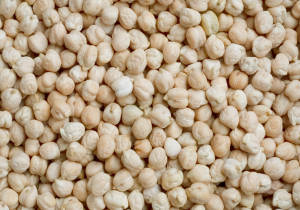Chickpeas are a highly versatile legume that are most commonly found as part of a salad or curry, squished in to a patty or made in to a dip. Interestingly, India is responsible for the large majority of chickpea growing.The chickpea is so named due to its beak-like protrusion, giving it the appearance of a small bird.
Chickpea does best in Mediterranean or sub-tropical climates. It needs a long growing season that is quite cool.
Planting Chickpeas
Chickpeas like a well-lit plot with light and fertile soil. The area needs little preparation, aside from a little organic matter if the soil is dry.
Chickpeas are grown from seed. It’s a good idea to start them off inside due to the lengthy growing season they require. If using this method, use paper or pots as they transplant badly. Try and keep the soil moist until the protrude through the surface of the soil. Transplant dates should be at the times listed in the paragraph below. Plant them 6 inches apart in rows 12 inches apart.
Otherwise, plant seeds about 1 inch (2.5cm) deep by scattering and then raking and leveling the soil. Planting times will vary depending on the climate. For Mediterranean regions, plant during autumn, for temperate regions plant after frosts, in sub-tropical and tropical climates plant after the rains. If growing inside in pots you can start about a month before this date, therefore giving you a month more of the season to play with.
Growing Chickpeas
Chickpeas need weeding in the early stages. After that, their spreading root system will be a natural deterrent to weeds.
Be wary of high-nitrogen fertilizers, as legumes get enough from the soil and can get overloaded.
Chickpeas need barely any water to survive, but watering twice a week for a total of an inch (2.5cm) per week is a good idea. Water around the plant to try and prevent mildew. The most important time to water is prior to flowering and as the chickpeas begin to swell, as this boosts growth.
Chickpeas grow poorly in containers. They are best outdoors as you need quite a number of plants to get a good amount of chickpeas, so its not worth the space or effort to plant in containers.
Harvesting Chickpeas
Chickpeas take about 4-6 months to mature. The trigger to harvest is browning of leaves and pods. Do not delay with harvesting once this browning has happened or the pods will split open and the chickpeas will be lost.
You can either remove the pods or chop the plant at the stem. Either way they will need a few days to dry out. Chopping the plant at the stem gives the added bonus of allowing the gardener to tie them together and hang them up somewhere in the house. If removing the pods, simply lay them out on a tray somewhere in the house with a bit of sunlight.
Chickpeas store particularly well when frozen. Blanch them for one minute, then pop them in airtight containers and in the freezer. They will keep for around 6 months.
Threats to Chickpeas
Powdery mildew infections are common during warm and dry days with cool nights. Use a fungicide to deal with it. Organic solutions for dealing with powdery mildew are few and far between. The best thing is to try and prevent it in the first place by not watering directly on the plant and providing direct sunlight. Remove any affected leaves as soon as possible if it occurs.
Some people report having success with a milk solution (1 part milk to 10 parts water) or a sodium bicarbonate solution to try and raise the pH, thereby creating an environment which powdery mildew dislikes. Your mileage may vary.


